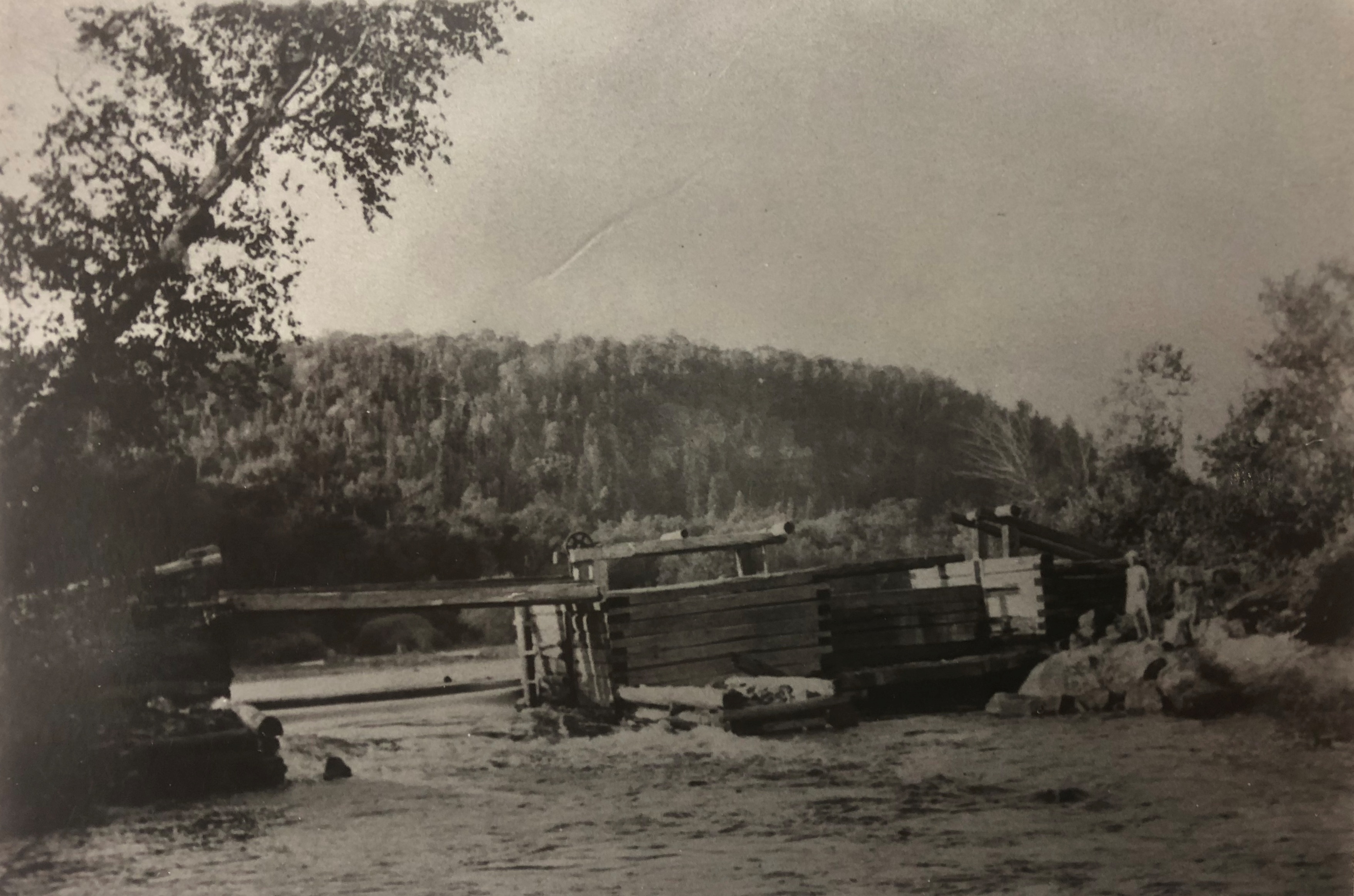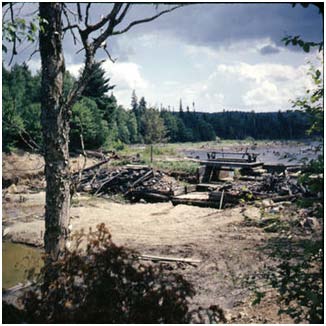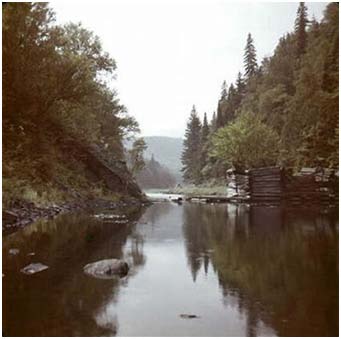The Log Drive
 |
|
McBrien’s Dam on the Big East River, 1938 (Township of Lake of Bays, Barbara Paterson Collection, Box 4, Selkirk binder)
|
The Big East River Improvement Company was formed to manage the flow of water on the Big East River sometime in the late 1800s. There were a number of logging companies that drove logs down the Big East River, as water was the only means of transporting logs for a long distance.
Over the years, all of the lumber companies that drove logs on the river had shares in the Big East River Improvement Company. Some of those shareholders were Muskoka Wood Manufacturing Company, owned by R. J. Hutcheson and family; the Bethune Lumber Company; Whiteside Lumber Company; and the Huntsville Lumber Company. The Dinsmore family was part of the Bethune Lumber Company. A Mr. Wainwright was the manager of the Huntsville Lumber Company.
Later, in about 1930, there was a company formed called the New Big East River Improvement Company that controlled the dams and hence the flow of the water on the Big East River. The New Big East River Improvement Company had a licence to build dams on and control the flow of water in the river so that the logging companies could transport logs from the lands beside the river and send them down to Lake Vernon near Huntsville.
Sorting the Logs
As soon as the logs were cut in the woods, there was a stamp put on the end of the log with a symbol that put a dint in the wood that looked like the brand put on cattle. Muskoka Wood had a stamp that looked like a simple X. When the logs arrived in Lake Vernon, they passed under a sorting jack, which was a floating bridge over top of the logs, and the men running the sorting jack would put the brand from each company into a circle of logs called a boom that had an entrance to it under the sorting jack bridge. Everybody used a metal stamp to put their company’s trademark on the end of the logs, and so the logs would be sorted for each company at that location.
 |
 |
 |
| Remnants of the logging dams on the Big East River (Bob Hutcheson) |
60 Miles on the River
The dams that were used were the following:
- West Harry Lake dam
- McCraney dam
- Finlayson dam
- Tasso dam
- McBrien dam
- Distress dam
The McArthur Chutes below Distress Dam were considered a very rough area to get the logs through. Hemlock logs were peeled, and the bark was sent to the tannery for tanning leather. The hardwood logs were partially peeled so they would float better. The estimated distance down the river would be about 60 miles as there are many twists and turns. The men would walk the full length of the river and dislodge logs that were hung up on stones and riverbanks, a job that would take several months.
A Pension from Earlier Days
As an interesting side item, the Big East River improvement Company was sold to the Province of Ontario about 1953. Bob Hutcheson had a one-third share in the New Big East River Improvement Company in 1953 and invested the proceeds from the one-third share in a pension when the company was sold to the Ontario government. The pension was theoretically to support him in his old age. Doctors told him that one could live on $700 a year, so he bought that kind of pension.
Bob says, “I get about $700 a year in 2018 which started when I was 65. This is a good lesson on the depreciated value of money. I laugh each month as I see the cheque.”
Sources:
Hutcheson, Bob (personal knowledge of lumbering and Muskoka Wood Manufacturing Company).



